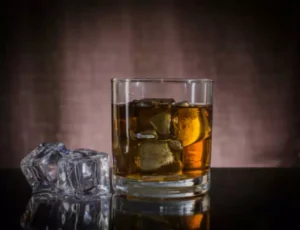
After the alcohol passes through your stomach, small intestine and bloodstream, your liver starts its cleanup. A breathalyzer doesn’t just detect whether you’ve consumed alcohol. It can also measure your BAC, which correlates to how much alcohol you’ve had. Still, after 24 hours, there’s a higher chance of a false negative.

Factors that Affect BAC
- That’s the equivalent of processing about one alcoholic beverage each hour.
- Many people ask if there is a way to flush alcohol out of their system faster.
- This can cause you to become overheated and can also lead to other health problems.
- So, it takes about 25 hours for your body to clear all the alcohol.
- Since it is not possible to get rid of acetaldehyde, your body will turn it into carbon dioxide, which is easy to remove from your system.
When drinking alcohol, it’s necessary to drink lots of fluids, but it’s also important to limit your water intake so that you don’t overdo it. Water does help flush out alcohol, but only after the liver has metabolized it. The advantages of drinking water to flush the alcohol out are numerous. Additionally, it will lessen your chance of getting a hangover by rehydrating your body. EtG tests can detect recent alcohol consumption, even if there is no measurable ethanol in your system. If there is EtG in your urine, there’s a good chance you consumed alcohol directly or indirectly in the last few days.
The stomach’s role
She specializes in health, nutrition, and lifestyle topics, with a focus on helping people understand the science behind everyday decisions. Mollie has published hundreds of articles in leading magazines and websites, including Women’s Health, Shape Magazine, Cooking Light, and MindBodyGreen. There are also certain supplements that can help to flush alcohol from your system, such as milk thistle and dandelion root. Speak to a healthcare professional before taking any supplements, however, as they may interact with other medications you are taking. Problem drinkers were 1.5 times more likely to drink and use anxiety meds. Interestingly, problem drinking among women is linked with anxiety meds use.

We Level Up Treatment Centers
It can be hard to find (or even know) the balance of how much alcohol your body is able to handle. If you’re not sure if your drinking crosses a certain line or not, try measuring your alcohol intake. “Nutrition optimization is actually the most evidence-based and most important intervention aside from stopping drinking,” points out Dr. Lindenmeyer. This is because, for a lot flush alcohol out of urine of people who experience some kind of liver dysfunction, it makes them at risk of not getting enough proteins, calories or vitamins. Your liver has enzymes that work like special tools to help metabolize (break down) different toxins that enter your body, such as alcohol. The same 2013 research review above showed that there’s not much you can do to speed up hangovers.
The We Level Up Treatment Center Network delivers recovery programs that vary by each treatment facility. Aldehyde dehydrogenase (ALDH) metabolizes alcohol to acetaldehyde, a highly toxic substance and a known carcinogen. Then, acetaldehyde is metabolized into another, a less active byproduct called acetate, broken down into water and carbon dioxide for easy elimination. Consuming alcohol with a higher alcohol content will result in a higher BAC. For example, wine typically has 12% alcohol by volume, while beer contains 4%. It will take longer for wine to leave your body than beer, even if you consumed the same amount.
- Foods that are high in fiber can also help to absorb toxins and remove them from the body.
- Food can also affect the rate at which alcohol is flushed from the urine.
- In other words, it assumes you’ll test positive if the test detects more than 100 nanograms per milliliter.
- Alcohol can be metabolized faster when you have eaten prior to drinking.
- Saliva tests can detect alcohol two hours after consumption, and hair tests can detect alcohol for up to 90 days.
Can you pass an alcohol urine test in 24 hours?

If you’ve recently consumed a large amount of alcohol, the window of detection may be longer than if you had a single drink. The primary benefits of enrolling in treatment are minimizing withdrawal symptoms and preventing complications. Medications like acamprosate, benzodiazepines, disulfiram, and naltrexone can help make withdrawal more manageable and sustain abstinence.
- And because everyone metabolizes alcohol at their own rate, some people will take longer to clear it than others.
- You’ve finally decided that you’re too old to drink or have realized that your body can no longer handle alcohol.
- You’ll feel the relaxation and positive mood that makes alcohol consumption enjoyable but also some of the adverse side effects.
- You’ll start noticing the milder effects of alcohol within 15 to 45 minutes of sipping (think change in mood and maybe you’ll feel a little warm).
- So it converts it to carbon-di-oxide, which can be easily eliminated.
The time it takes to detect alcohol varies depending on the body system and test employed. In most circumstances, alcohol can remain in your system for 6 to 72 hours, depending on the type of detection test utilized. Anyone who occasionally consumes alcohol has, at some point, wondered how to clean your system of alcohol in 24 hours.
- In low to moderate amounts, alcohol can have a euphoric and relaxing effect.
- These methods will not help your body to process alcohol any quicker and you will still remain intoxicated and impaired.
- This is why different tests detect traces of alcohol from a few hours to several weeks.
- Secondly, it can help to rehydrate the body, which is important because alcohol is a diuretic that can cause dehydration.
- Ninety percent of the time, the alcohol goes through the liver, and only around 10% of it gets out through sweat and urine.
How is alcohol metabolized in your body?

Leave a Reply